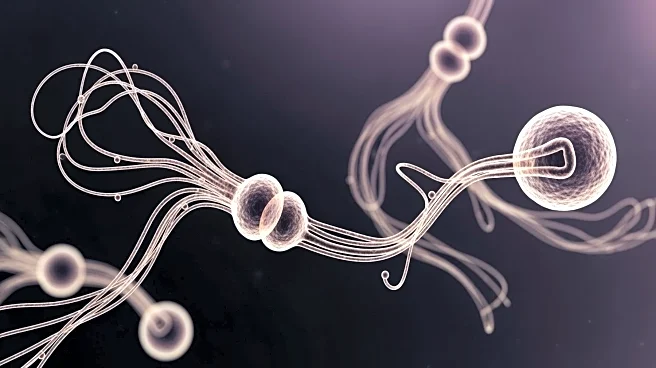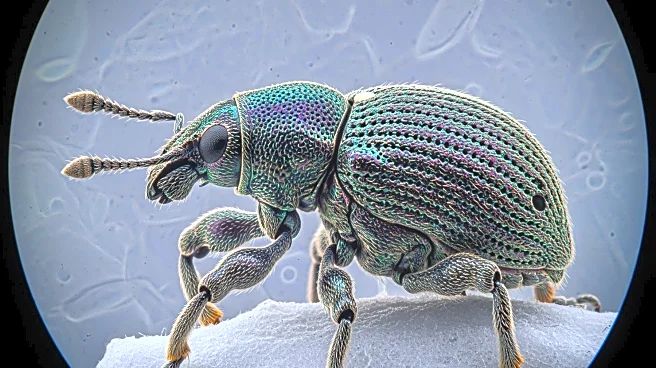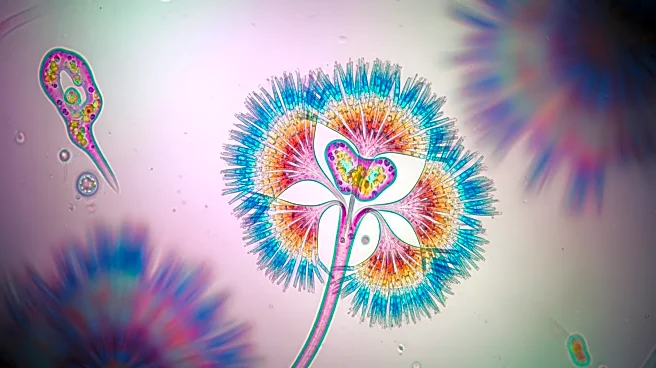What's Happening?
Recent research has uncovered a microtubule singlet-to-doublet transition in the basal body of Plasmodium yoelii male gametes. Using advanced imaging techniques, scientists observed that the basal bodies
in these gametes are thinner than axonemes, with distinct microtubule structures. Unlike the typical triplet-to-doublet transition seen in other organisms, Plasmodium exhibits a unique singlet-to-doublet transition. This discovery provides insights into the structural differences in microtubule organization between Plasmodium and other eukaryotes, potentially impacting our understanding of parasite biology.
Why It's Important?
Understanding the microtubule organization in Plasmodium is crucial for developing targeted treatments against malaria. The unique singlet-to-doublet transition could offer new avenues for disrupting the parasite's reproductive cycle, potentially leading to innovative strategies for malaria control. This research enhances our knowledge of Plasmodium's cellular biology, which is essential for designing effective interventions.
What's Next?
Further studies are needed to explore the functional implications of the singlet-to-doublet transition in Plasmodium. Researchers may investigate how this structural difference affects the parasite's ability to reproduce and survive within host organisms. Additionally, this discovery could prompt a reevaluation of microtubule dynamics in other parasitic species, broadening the scope of cellular biology research.
Beyond the Headlines
The findings raise questions about the evolutionary adaptations of Plasmodium and its unique cellular structures. Understanding these adaptations could provide insights into the parasite's resilience and ability to evade host defenses, informing future research on parasitic diseases.











